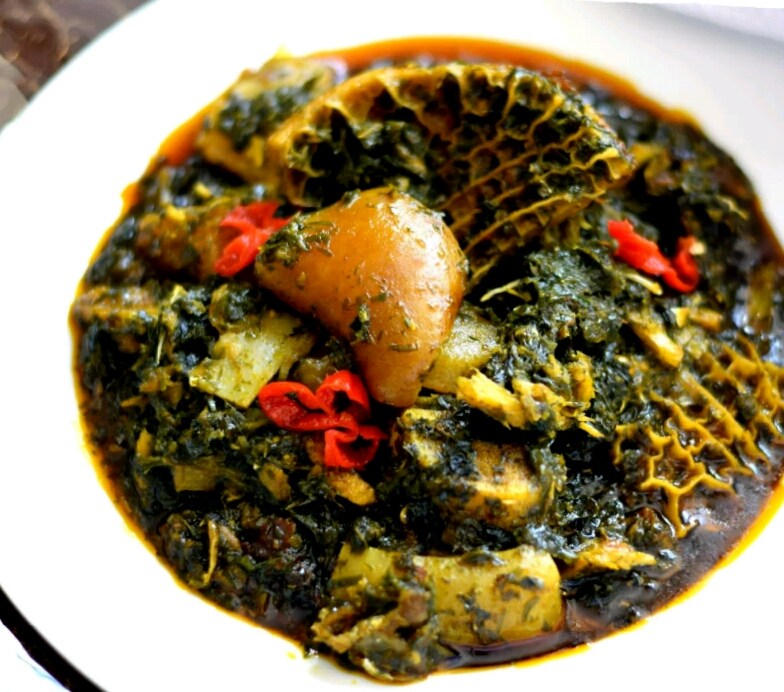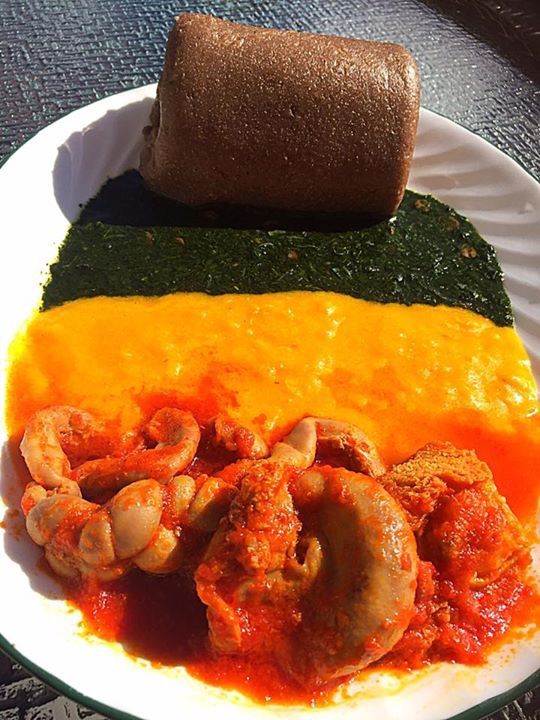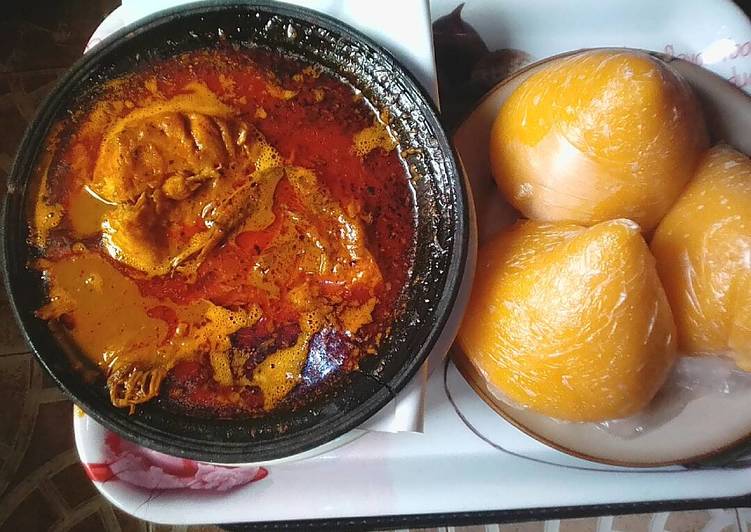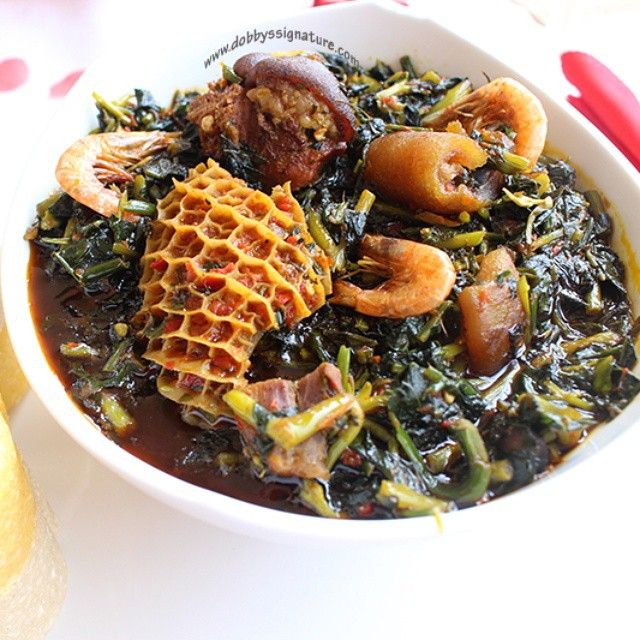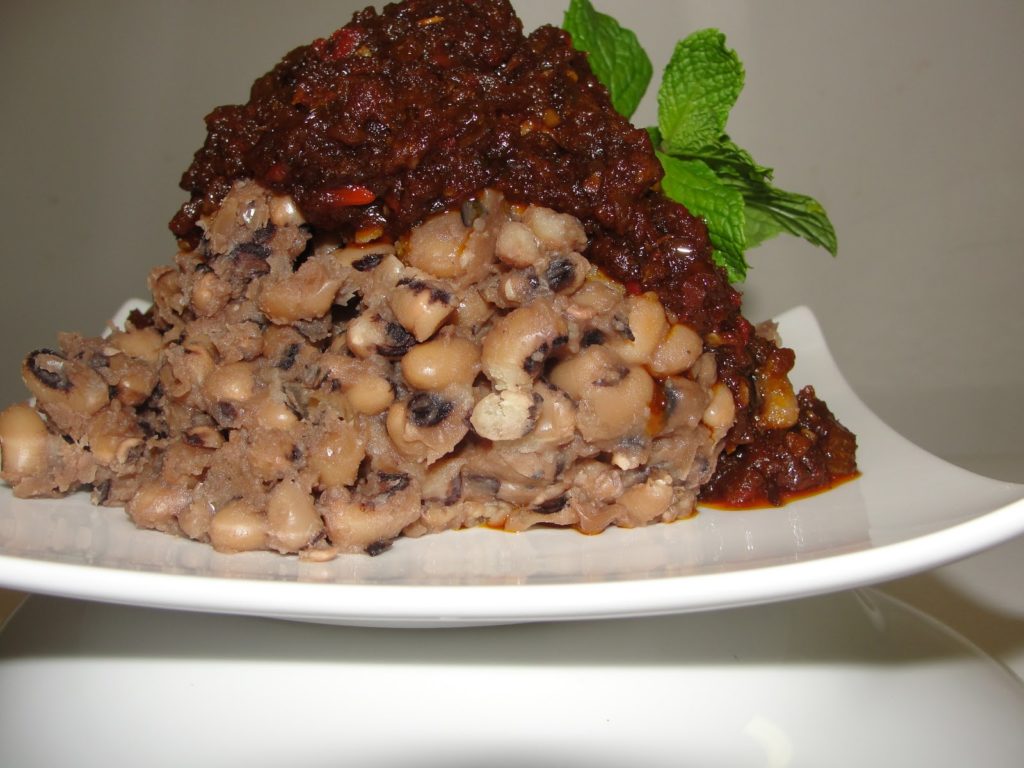Nigeria is a huge country with ethnically and culturally diverse groups of people with over 500 tribes. Little wonder there are so many different delicacies unique to them. Nigerian food is so amazing as it gives a distinct flavour that cannot be found anywhere in the world.
The variety of Nigerian food leaves the taster coming back for more, as the food takes your taste buds on a festival of flavours.
Cooking Nigerian food could be a Herculean task, hence it is important that children help in both the meal preparation and cleaning up of the kitchen. They should get involved with the process so they can become independent when it comes to cooking. That way, they would not necessarily have to rely on anyone to help prepare their meals, especially when they know the basics. Involving the children in cooking Nigerian food could also help in family bonding and teaching basic survival skills.
If you want to treat yourself, or your family to amazing Nigerian food, here are 6 easy delicacies you can choose from.
Pounded Yam and Egusi Soup
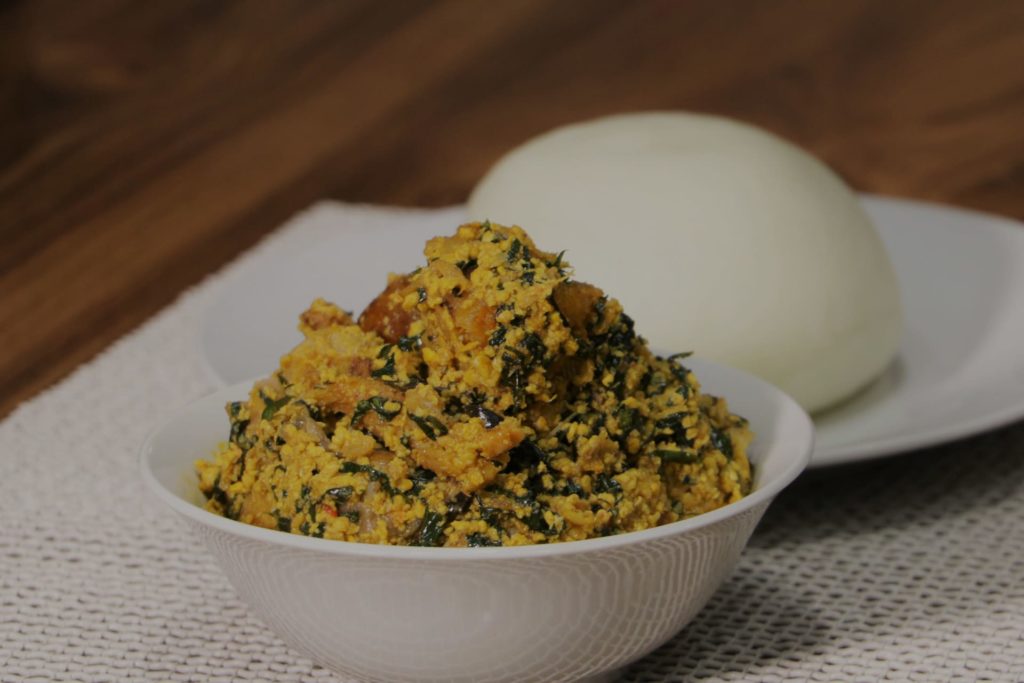
When it comes to local Nigerian delicacies, Pounded yam and Egusi soup needs little or no introduction. It is so popular that in a recent poll conducted by CNN, it was voted as the national food of Nigeria. This particular Nigerian food is loved by nearly 80% Nigerians as it is not ethnic-specific. The pounded yam is made from boiled yam pounded in a mortar, while the Egusi soup is made using melon seeds. To learn how to make this yummy Nigerian Food, take a look at the recipe below and follow the steps listed below;
Ingredients
- Palm Oil
- Beef
- Ground Pepper
- Ground Melon Seeds
- Ugwu (Fluted Pumpkin Leaves)
- Dry Fish/Stock Fish/Crayfish
- Stock Cubes
- Iru (Fermented Locust Beans)
- Yam
- Water
Cooking Directions
1. First, peel the yam then put it to boil in a pot. Set the heat to medium.
Your teenage child (in secondary school) can help with this activity since teenagers are well-developed in their eye to hand co-ordination. Remember to teach him/her how to properly hold the knife to avoid a knife cut.
2. After that, boil the meat with the spices and seasoning cubes till tender.
How about your child adding the spices and seasoning? Encourage your child in preschool to do this.
3. Pour the palm oil into a pot and set it on medium heat. Once the oil becomes translucent, add the egusi and mix till it all turns yellow.
You may want to do this yourself because of the fumes that come from the oil. If your child is allergic to fumes from frying oil or have a respiratory condition, you may excuse him/her for a while.
4. Stir-fry it for about ten minutes.
5. Add the meat stock into the mixture, while still stirring the soup, until you get the preferred consistency.
6. Cover and cook for about 25 minutes while stirring at intervals. If it isn’t stirred, it’ll get burnt.
7. Add the Ugwu (Fluted Pumpkin Leaves) along with the ground crayfish and pepper.
Allow your child to participate in this activity.
8. Stir very well and leave it to simmer.
9. By this time, the yam would have been ready, so put it in a mortar and pound.
10. Mould it, put it in a cooler and set aside.
11. Voila! Your Pounded Yam and Egusi Soup are ready to be devoured.
Afang Soup
Anyone interested in exploring Nigerian food must definitely taste Afang soup. Native to the Efik people of Cross River and Akwa-Ibom State, this delicious and healthy dish would leave you salivating. Made with Ukazi vegetable, this highly nutritious Nigerian food is filled with fibre that helps in the functioning of the body cells. It is also a great meal choice for weight-watchers.
Ingredients
- Grounded Afang Leaves
- Water leaves
- Dry Fish/Beef
- Ukazi Leaves (Gnetum africanum or African Jointfir)
- Extracted Periwinkles
- Stockfish
- Seasoning Cubes/Salt
- Palm Oil
- Fresh Pepper
Cooking Directions
1. Wash the meat/stockfish and cook till it’s soft.
Allow your children to participate in the washing of the meat/stockfish. Make sure they properly wash their hand with soap before doing this to avoid germs in your food.
2. Use the stock to cook the periwinkles and stockfish for about 8 minutes
Use this eight minutes to have a meaningful conversation with your child. Intelligently ask questions that you feel may be bothering him/her. This is a good time for your child to be real with you.
3. Add palm oil, seasoning cubes, ground pepper and cook for five minutes.
Allowing your preschool child to unwrap the seasoning cube is a subtle way to help them develop their hand to eye co-ordination as well as fine motor skills.
4. Add Ukazi leaves and stir it thoroughly while allowing the soup to simmer.
5. Leave it for about 10 minutes, then serve it with any swallow of your choice.
Amala, Ewedu, and Gbegiri
The combination of Amala, Ewedu, and Gbegiri is a classic Nigerian food that is popular among the Yorubas, especially the ones from Ibadan, Oyo State. This mouthwatering slippery dish is an all time favourite, especially for children. What makes it so lovable is the smoothness of the amala, as it passes freely down the throat. To make this savoury Nigerian food, follow the easy steps in the recipe below.
Ingredients
- Elubo (Yam Flour)
- Beans
- Ewedu (Jute Leaves)
- Ground Pepper
- Iru (Fermented Locust Beans)
- Palm Oil
- Kaun/Akaunwu (Potassium)
- Crayfish
- Seasoning Cubes/Salt
Cooking Directions
1. Soak the beans for 25-30 minutes, then remove the coat by rubbing them between your palms
Even though there are bean peeling machines available, allowing your child to participate in cooking this Nigerian food is a good way of developing his/her gross motor skills.
2. Pour the beans into a pot and leave to cook until it is very soft.
Let your child find out if the beans is soft.
3. Mash the beans together till the mixture becomes creamy.
4. Add a bit of ground pepper, salt, seasoning cubes into the mixture, and keep stirring till you get your desired paste. Set it aside after.
5. For the Ewedu (Jute Leaves), detach the leaves from the stalk and wash thoroughly.
This is another activity your child should participate in. Detaching the leaves from the stalk will help develop their fine motor skills. Initially, it might look messy, but make sure you encourage him/her.
6. Boil the Ewedu (Jute Leaves) in water, together with the Kaun/Akaunwu (Potassium), locust beans and salt.
7. Once the Ewedu (Jute Leaves) feel slippery, put it into a mixer and blend till you get the desired consistency.
8. For the amala, boil water in a pot, and add the Elubo (Yam Flour) into it. Stir with a wooden spoon till it becomes very soft.
9. By now, the amala should be ready. Serve it with the Gbegiri and Ewedu with any type of stew you desire.
Starch and Banga Soup
Banga soup is a popular Nigerian food among the people of Delta and Edo state. It is made from Banga (native to the Igbos) and Starch. The soup could also be eaten with Eba or Fufu. it is extremely easy to make, as it can be ready in an hour or less. To learn how to cook it perfectly, follow the steps in the recipe below.
Ingredients
- Banga
- Dry Pepper
- Banga Spices
- Crayfish
- Onion
- Fresh Fish
- Starch
- Salt/Seasoning Cubes
- Water
Cooking Directions
1. Wash the banga thoroughly and boil for 30 minutes to soften.
This thirty minutes could be an amazing time to have a conversation with your child about his/her friends.
2. Mash the banga with hot water and wash again.
3. Drain the banga and put it in a pot set on medium heat
4. Add the dry pepper, banga spices and onions and leave it to boil for 10 minutes.
Ensure that your child properly washes his/her hand if he/she touched or handled the dry pepper to avoid eye irritation.
5. Wash and add the fresh fish into it and let it boil for 25 minutes.
6. Put some of it into a native pot and let it steam for 10 minutes.
7. For the starch, get a pan and pour palm oil in it.
8. After, add the starch and mix very well on low heat.
9. Stir very well till it becomes solid.
10. Serve it in a plate and enjoy the yummy goodness.
Edikaikong
One popular Nigerian food unique to the South-Eastern people of Nigeria is Edikaikong. This healthy meal choice is made with fluted pumpkin leaves (Ugwu) and it can be eaten with any preferred swallow.
Ingredients
- Chopped Pumpkin Leaves (Ugwu)
- Waterleaves
- Beef/Ponmo/Saki (Cow Skin/Cow Stripes)
- Crayfish/Stockfish/Shrimps
- Onions
- Ground Pepper
Cooking Directions
1. Boil the ponmo, beef and saki with the necessary ingredients. Leave to cook till it is tender enough to be eaten.
2. Once it is ready, add the palm oil, stockfish, crayfish, and shrimps.
3. Pour the palm oil into the mixture and stir for about 10 minutes.
4. Add the Pumpkin Leaves (Ugwu) and cook for about 8 minutes. Stir occasionally so as to prevent it from burning.
Allow your child to participate in the stirring.
5. Serve with any preferred swallow.
Ewa Agoyin
One of the best things that ever happened to the usual beans recipe is the Ewa Agoyin. Popular among the Yorubas, this Nigerian food is made with boiled beans and peppered fried sauce. This delicacy can be eaten on its own (with the sauce of course), with bread, or plantain. To make the perfect ewa agoyin for your family, follow the easy recipe below. Fortunately, the ingredients could easily be found in the kitchen, hence, you can make it quickly.
Ingredients
- Beans
- Palm Oil
- Red Onion
- Dried Pepper/Cameroon Pepper
- Salt
- Minced Ginger
- Dried Bell Pepper (Tatashe Gbigbe)
Cooking Directions
1. Wash the beans thoroughly and boil with salt in a pressure cooker.
Your child can help to wash the beans while you focus on other activities that will make the preparation of this meal an absolute success.
2. When it is ready, add salt and mash it up, then set it aside.
3. To prepare the sauce, set the dry tatashe in water until it is soft (you can soak it a night before).
4. Combine all the pepper and blend briefly. The pepper paste must not be smooth.
5. Heat the palm oil in a pot and add the chopped onions. Fry the onions for about twenty minutes till they turn black, not burnt.
6. Add all spices and stir-fry for about 15 minutes till the sauce is dark.
7. Serve the beans and pour the sauce on top.
Benefits of Eating Nigerian Food
All the aforementioned Nigerian food are completely healthy, as they contain all the appropriate nutrients in the six classes of food. In essence, anyone can get a balanced diet from all of the Nigerian food listed above. As seen in the recipes above, it is evident that Nigerian food is unique and nutritious.
From the complex Carbohydrates in the pounded yam to the Vitamins in the vegetables, Nigerian food seems to cover all healthy meal bases. Celebrate our diversity by cooking some of these sumptuous meals for the family.
It is important to note that all these meals must be prepared in an extremely clean and hygienic condition. This would prevent the occurrence of food poisoning and water-borne diseases.

